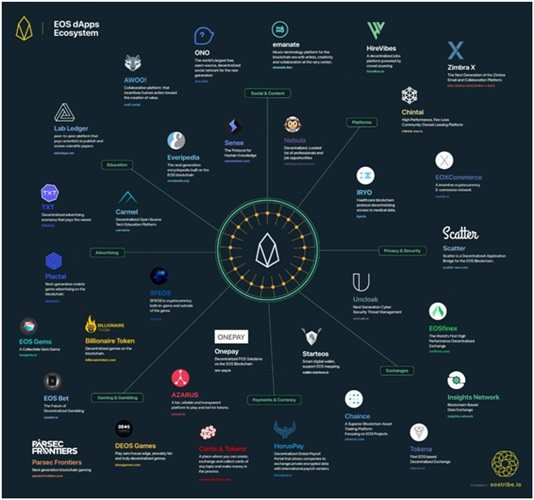Enterprise Blockchain Operating Systems for the Apps and APIs Era

Recently, Block.one announced the release of their 1.0 version of their open source EOSIO blockchain software – an “operating system” designed for enterprises to efficiently build and deploy highly secure and performant blockchain-based applications.
One of several “OS” platforms designed to enable developers to build quickly and using common standards and code, EOSIO includes:
- Free Rate Limited Transactions
- Low Latency Block confirmation (0.5 seconds)
- Low-overhead Byzantine Fault Tolerant Finality
- Optional high-overhead, low-latency BFT finality
- Smart contract platform powered by Web Assembly
- Designed for Sparse Header Light Client Validation
- Scheduled Recurring Transactions
- Time Delay Security
- Hierarchical Role Based Permissions
- Support for Biometric Hardware Secured Keys (e.g. Apple Secure Enclave)
- Parallel Execution of Context Free Validation Logic
- Inter Blockchain Communication
According to their announcement, “EOSIO allows developers to write business logic that is compatible with consensus algorithms that demand deterministic execution.” EOSIO is written to interface with business logic leveraging the secure public key infrastructure which is designed to ensure accountability and and transparency to increasingly digital businesses.
While it is still too early to tell if EOSIO will be compatible with different kinds of governance structures, the system is designed to accommodate that, similar to Cognida’s multi-blockchain management platform and network announced earlier this week at the World Blockchain Forum.
EOSIO is not just for enterprises; it’s also purpose built for communities. Internally, system admins can allocate unlimited resource quotas to users – without any tokens.
Alternatively, smart contracts can allocate resource quotas by other means, such as token staking, market fees, or voting.
EOSIO can be configured to work with two Web Assembly engines today - Binaryen and WAVM.
EOSIO was released under the open source MIT license and offered “AS IS” without warranties.
Built upon many third-party libraries including Binaryen (Apache License) and WAVM (BSD 3-clause) Block.one has been careful to state that given the open source nature and integrations with open source ecosystem partners that apps built or connected will be free of errors, bugs or bad code.
Like Cognida, Block.one didn’t launch any public blockchains. They are providing the software only, just as Cognida is providing a platform and network that works with all blockchains, in a neutral, agnostic fashion.
EOS is like traditional operating systems in terms of functionality according to some reviews. Users can schedule tasks, execute applications, and control peripherals but the difference? A decentralized standard.
The field for blockchain operating systems is still small, with other players including PIMP, a portable instant mining operating system based on the Linux kernel with claims this OS can boost mining profitability.
ethOS, a 64-bit Linux OS, mines Ethereum, as well as ZCash, Monero, and sother currencies, with a built-in feature to exchange altcoins to Bitcoin. ethOS has been around since early 2016 and includes hardware with the OS preinstalled as an option.
ROKOS is a cross-platform operating systems for both Bitcoin and altcoins. It can run on a Raspberry Pi and other IoT devices as well which can run on constrained hardware.
Will EOSIO or other blockchain operating systems become the next Windows / Linux / MacOS with built-in crypto incentives? Will P2P “coin-operated” systems supplant traditional cash transactions?
Stay tuned –the innovations underway here, as a more advanced overall tech ecosystem matures, may be making blockchain more appealing and ripe for enterprise adoption across the board.
Edited by Ken Briodagh

